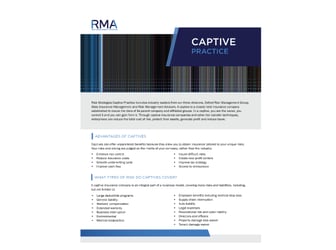As a business owner, managing the financial aspects of a self-funded medical insurance plan is crucial to ensure the sustainability and success of the program. Here are some key considerations to keep in mind:
Monitoring Claims and Utilization
One of the essential aspects of managing a self-funded medical insurance plan is monitoring the claims and utilization patterns. This allows businesses to identify any potential cost drivers and take appropriate measures to control expenses. Regularly reviewing claims data can help pinpoint areas of high utilization and explore potential solutions, such as implementing wellness programs or negotiating discounted rates with providers.
Implementing Cost Control Measures
To ensure the financial stability of a self-funded medical insurance plan, businesses need to implement cost control measures. This includes negotiating favorable rates with healthcare providers, implementing wellness programs to promote employee health and reduce healthcare expenses, and encouraging the use of cost-effective healthcare services, such as telemedicine.
Here's a table summarizing the main points:
|
Financial Aspect |
Considerations |
|
Monitoring Claims |
Regularly review claims data |
|
Identify areas of high utilization |
|
|
Explore potential solutions |
|
|
Cost Control Measures |
Disease Management |
|
Direct Contracting |
|
|
Rebates from Rx program |
|
|
Predictive Modeling |
It's important for business owners to proactively manage the financial aspects of a self-funded medical insurance plan to control costs and ensure the long-term sustainability of the program. With careful monitoring and the implementation of cost control measures, businesses can provide quality healthcare coverage to their employees while maintaining financial stability.
Explore
- Solutions
- Captive Insurance
- Captive Insurance Overview
- What is Captive Insurance?
- Definition of Captive Insurance
- Types of Captive Insurance
- Typical Structures of a Captive Insurance Program
- Why Form a Captive Insurance Company?
- Captive Insurance Utilization and Value
- Evaluating a Captive Insurance Program
- How to Setup a Captive Insurance Company
- Operating a Captive Insurance Company
- Captive Insurance Operating Costs
- Retaining Risk vs. Financing Risk
- Risk Distribution Through Captive Insurance
- Taxation of a Captive Insurance Company
- Captive Insurance Domiciles
- News and Insights
- About Us
Practice Leader(s)

Captive Practice Leader, Managing Director

Captive Practice Leader, Managing Director
Max Jong is the Captive Practice Leader and Managing Director at Risk Management Advisors, an alternative risk and captive management firm. Max began his career at Northwestern Mutual in 1994 after graduating from UCLA. Over 12 years, he built a successful financial services practice while heading up an office overseeing 50 professionals in Los Angeles and Irvine, California. The office was perennially one of the top producing organizations in the Northwestern Mutual system.
Max joined his partners at Risk Management Advisors in 2007 as he began to work with more sophisticated mid-market business owners. RMA specializes in the design, formation, and management of captive insurance companies. There’s also an emphasis on self-funded group benefits as well as other creative alternative risk management strategies. The firm assists business owners in better managing their risks without jeopardizing their balance sheets. In 2019, he headed up a merger with Risk Strategies, a Top 10 private national specialty insurance brokerage and consulting firm. Since then, he was appointed as the Captive Practice Leader to oversee the growth and development of the organization.
For five years, Max served as an Independent Director for Fiat Lux Risk and Insurance Company, one of the largest and most sophisticated captive insurance companies. Fiat Lux was established by the University of California Regents to better manage the broad risks of the University of California system.
Max has also been a lifelong supporter of Big Brothers Big Sisters of Greater Los Angeles. He initially volunteered to be a mentor in 1995 and is currently mentoring his second "Little." Max was asked to join the Board of Directors in 2000 and eventually served as their Board Chair. After 20+ years as an active board member, he continues to support the organization by serving as a Trustee.
He is married to Alice, and they’re raising two young children, Hunter and Hayden. Max and Alice are happily married despite her irreparable mistake of going to USC. He loves to travel, golf, and is a hopeful Lakers fan.
Resources








